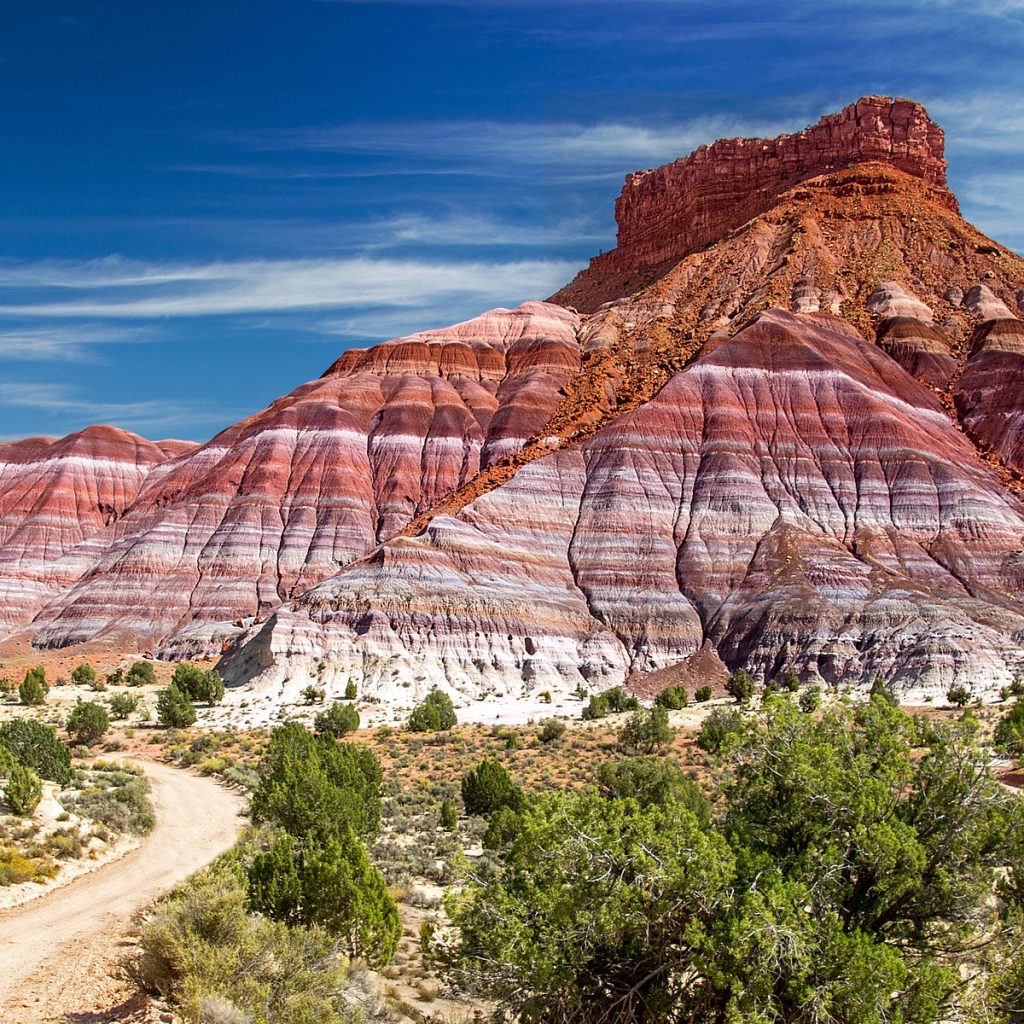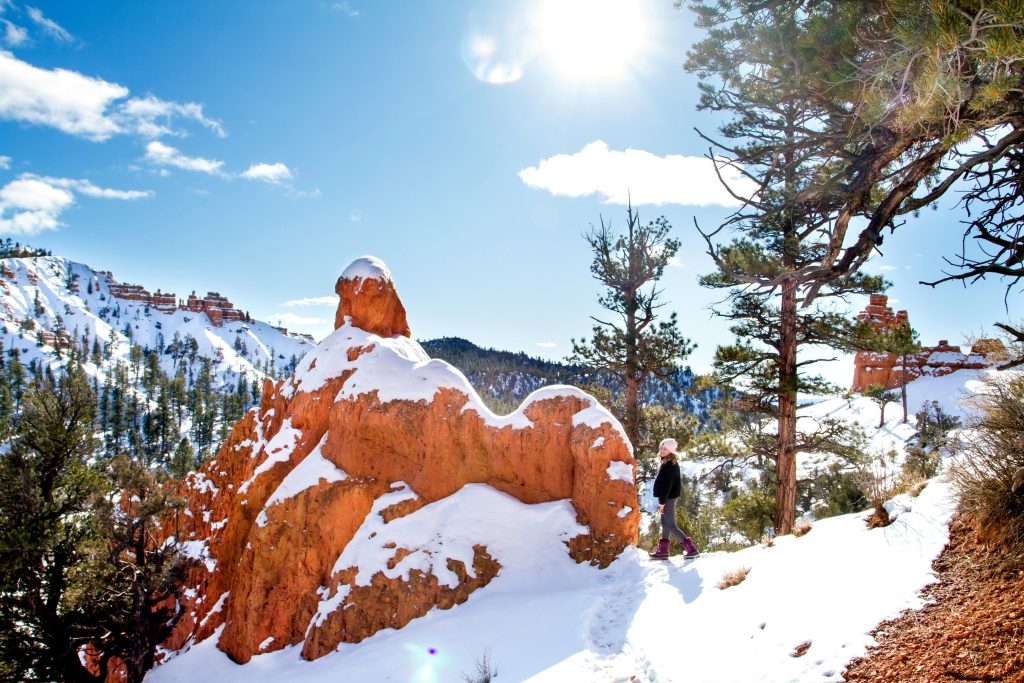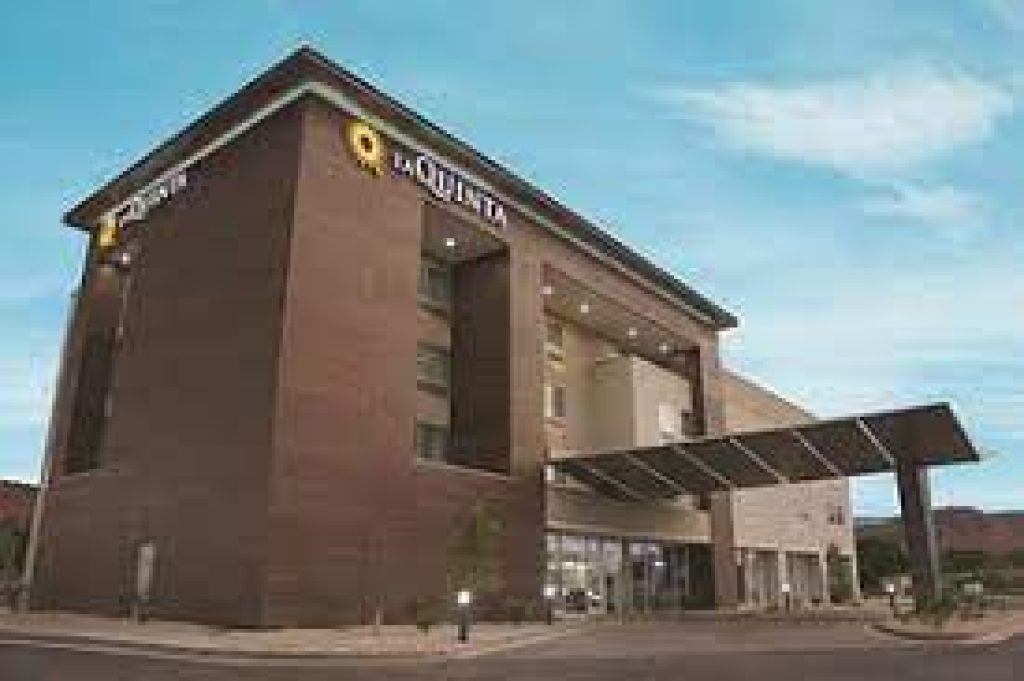
The Paria River Canyon is a stunning natural wonder in the American Southwest’s heart. This unique landscape allows hikers to explore towering red rock formations, winding canyons, and stunning vistas.
In this article, we’ll delve into the Paria River Canyon’s history, describe the sights you’ll see along the way, and provide practical advice on planning and hiking the Paria River Canyon.
Brief History Paria River Canyon
The Paria River Canyon is located in southern Utah and northern Arizona and is part of the Grand Staircase-Escalante National Monument. The canyon was formed over millions of years by the Paria River, which winds its way through the landscape, carving out stunning rock formations and canyons.
The Paria River Canyon has a rich history dating back over 10,000 years, with evidence of Native American settlement in the area. The Anasazi people who lived in the area between 200 and 1200 AD left rock paintings, pottery, and other artifacts that can still be seen today.
More recently, the canyon was used by early settlers and outlaws as a hideout and a route for contraband. Mormon settlers settled the area in the 1860s, establishing a small community called Palea, but it was eventually abandoned due to floods and drought.
In the early 20th century, the path was used for cattle grazing, and a small mining operation was established in the area. In the 1960s, plans were made to build a dam on the Paria River to flood the canyon. However, due to opposition from environmental groups, including the Sierra Club, the project was canceled in 1996, and the area was preserved as part of the Grand Staircase-Escalante National Monument.
This monument was built by President Bill Clinton in 1996 to protect the region’s unique geological, biological, and archaeological resources.
Description of the Sight
The Paria River Canyon is a stunning natural wonder in the heart of the American Southwest. The landscape features towering red rock formations, winding canyons, and breathtaking views. The area is home to various unique geological formations, including the famous ‘Waves,’ sandstone formations resembling swirling waves. Other notable structures include the Hoodoo, Cathedral, and Buckskin Gulch.
The canyon is home to diverse flora and fauna, including bighorn sheep, coyotes, cacti, and other desert plants. The area is home to various bird species, including golden eagles and peregrine falcons.
The Paria River itself meanders through the landscape, creating stunning rock formations and canyons. The river can be seen from various vantage points along the trail, and hikers can also use the river for swimming and wading.
One of his most popular hiking trails in the area is the Buckskin Gulch Trail. This trail is a 34-mile hike that takes hikers through narrow slot canyons and towering red rock formations. Known for its breathtaking beauty and rugged terrain, this trail can be enjoyed as a day hike or a multi-day backpacking trip. A must-see for outdoor enthusiasts, the Paria River Canyon offers a unique and unforgettable experience of the natural beauty of the American Southwest.
Ways to Get There
The Paria River Canyon is located in a remote area of southern Utah and northern Arizona, and getting there can be a bit challenging. The nearest town is Kanab, Utah, approximately 50 miles from the canyon. From Kanab, there are two main routes to access the Paria River Canyon:
1. From the west: Take Highway 89 east from Kanab for approximately 34 miles to the Paria Contact Station. From there, turn onto House Rock Valley Road and follow it for 38 miles to the Wire Pass Trailhead, which is the starting point for the Buckskin Gulch Trail.
2. From the east: Take Highway 89 south from Page, Arizona, for approximately 34 miles to the Paria Contact Station. From there, turn onto House Rock Valley Road and follow it for 38 miles to the Wire Pass Trailhead.
It’s important to note that the roads leading to the Paria River Canyon are unpaved and can be rough and rocky. A high-clearance vehicle is recommended, and a 4-wheel drive may be necessary in some areas, especially after heavy rains.
Details on Hiking the Paria River Canyon
The Paria River Canyon offers a variety of trails for hikers to explore, from easy day hikes to multi-day backpacking trips. The most popular hike is the Buckskin Gulch Trail, a 21-mile hike through narrow slot canyons and towering red rock formations. This trek can be done as a day hike or a multi-day backpacking trip, with camping facilities available along the way.
When to Go: Weather and Season
The best time to visit Paria River Canyon depends on your preferences and planned activities. The area is known for extreme temperatures, with hot summers and cold winters, so it’s essential to plan accordingly.
Spring (March to May) and autumn (September to November) are considered the best times to travel due to the mild temperatures and pleasant weather. Temperatures are neither too hot nor too cold at this time of year, making it perfect for hiking and backpacking.
Summers (June to August) can be scorching, with temperatures sometimes exceeding 100°F (38°C). However, if visiting in the summer, it is recommended to go early in the morning or late in the afternoon to avoid the heat. Summer is also the monsoon season in the area, and flooding is possible. Therefore, it is vital to check the weather forecast and be prepared for any weather changes.
Winters (December to February) can be very cold, with nighttime temperatures sometimes dropping below freezing. However, if you’re prepared for the cold, winter is a great time to visit as the countryside is snow-covered and less crowded.

Overall, the best time to visit the Paria River Valley is spring or autumn when temperatures are mild, and the climate is pleasant. No matter when you visit, be sure to check the weather conditions and be prepared for changing weather.
Accommodation
Several accommodation options are near Paria River Canyon, but the area is relatively remote and undeveloped. Below are some options.
1. Camp:
The area has several campgrounds, including White House Campground and Lone Rock Beach Campground. Both campgrounds offer tent and RV camping facilities such as picnic tables, fire pits, and restrooms. Please note that these campgrounds can fill up quickly, especially during peak season.
2. Camping in the BackCountry:
Camping in the backcountry is also an option for hiking or backpacking in the area. A permit is required to stay overnight in the canyon. Permits are available from the Bureau of Land Management or the Grand Staircase-Escalante National Monument Visitor Center.
3. Hotels and motels:

The closest town with hotels and motels is Kanab, Utah, about 80 miles from the canyon. Kanab has many options, from budget motels to luxury resorts.
4. Apartments:
The area also has several vacation rental options, including cabins and vacation homes. These can be found through online rental platforms such as Airbnb and VRBO.
Planning and booking ahead is essential wherever you stay, especially during peak season. Please note that this area is remote and undeveloped, so may be limited. Be sure to bring enough food, water, and other essentials and be prepared for changing weather conditions.
Food and Water
Hikers must bring food and water when hiking the Paria River Canyon, as there are no facilities or water sources along the trail. It’s recommended to bring at least one gallon of water per person per day and to pack lightweight, high-energy foods.
Challenges When Hiking the Paria River Canyon
Hiking the Paria River Canyon can be a challenging and rewarding experience, but it’s essential to be prepared for the area’s unique challenges. Here are some of the main challenges you may encounter when hiking the Paria River Canyon:
1. Flash floods: Flash floods are a common occurrence in the area, especially during the summer monsoon season. It’s essential to know the indications of an impending flash flood. If you’re caught in a flash flood, seek higher ground immediately.
2. Extreme temperatures: The region is well-known for its harsh weather, hot summers, and freezing winters. Bring plenty of water and stay hydrated, especially in the heat of the summer. Be prepared for cold temperatures in the winter by bringing warm gear.
3. Rough terrain: The terrain in the canyon can be rough and rocky, with narrow slot canyons and steep drop-offs. It’s important to wear sturdy hiking boots and be prepared for challenging terrain.
4. Limited amenities: The area is remote and undeveloped, with limited amenities. Be sure to bring plenty of food, water, and other supplies, and be prepared to pack out all of your trash.
5. Navigation: The area with few markers or signs can be challenging. Be sure to bring a map, compass, or GPS device, and be prepared to navigate using landmarks and other natural features.
Despite these challenges, hiking the Paria River Canyon can be a rewarding and unforgettable experience. Be prepared and take precautions to stay safe and enjoy the area’s natural beauty.
Tips to Know When Hiking the Paria River Canyon
1. Pack light: Hikers should pack only the essentials and aim for a lightweight backpack to make the hike more comfortable.
2. Stay hydrated and carry enough water: Hikers should carry at least one gallon of water per person per day and drink plenty of fluids to avoid dehydration.
3. Footwear: Lightweight, breathable, and capable of withstanding all-day hiking through water and dirt is recommended. Break-in sneakers with decent tread are ideal. Bring no heavy, waterproof footwear, which will slow you down.
4. Hiking poles – If you already own and use trekking poles, bring these with you to help with river hiking. On the first day, you can pick up a robust branch and use it as a hiking staff (this is what we do). These are crucial for riverbed stability and checking for soft places. If the river is low and transparent, you may not need poles.
5. Ensure to secure a permit on time before departing
Potential Dangers when Hiking Paria Rivers Canyon
Hiking the Paria River Canyon can be a challenging and potentially dangerous experience, especially for those unprepared or inexperienced for desert treks. Here are some potential hazards to be aware of when hiking the Paria River Canyon.
1. Dehydration symptoms:
The canyon’s desert climate is so hot and dry that hikers risk dehydration if they don’t have enough water and electrolytes. You should bring at least 1 liter of water per person daily and drink often, even if you are not thirsty.
2. Heatstroke:
The extreme heat of the canyon can also cause heat stroke, which is a medical emergency. Symptoms include headache, dizziness, confusion, nausea, and rapid heart rate. If these symptoms appear, seek shade and drink water immediately.
3. Hypothermia:
In winter, the canyon can drop below-freezing temperatures, and hikers risk hypothermia if they don’t bring enough warm clothing. Bringing warm layers such as fleece jackets or waterproof jackets is recommended.
4. Navigation:
Navigating the canyon can be difficult as there are few signs and signs. Hikers should bring a map, compass, or GPS device and be prepared to navigate using natural landmarks and features.
5. Wildlife:
This canyon is home to various wildlife, including snakes, scorpions, and spiders. Hikers should be aware of their surroundings and be aware of where they step and place their hands.
By being aware of these potential hazards and taking the necessary precautions, hikers can safely enjoy the natural beauty of the Paria River Gorge. You should hike with a partner or group and let someone know your itinerary and expected return time.
Conclusion
The Paria River Canyon is a stunning natural wonder that offers hikers a unique and challenging experience. With towering red rock formations, narrow slot canyons, and stunning vistas, the canyon is a must-see for any outdoor enthusiast. Hiking the Paria River Canyon requires careful planning and preparation, but with the right gear and mindset, it can be a rewarding and unforgettable experience. Whether you’re a seasoned hiker or a beginner, the Paria River Canyon is a destination that should be on your bucket list.


